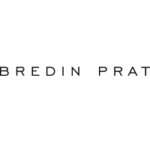-
What proportion of transactions have involved a financial sponsor as a buyer or seller in the jurisdiction over the last 24 months?
The inflow of investments from financial sponsors in India in 2023 saw a decline as compared to 2022 owing to macroeconomic challenges such as high interest rates, softened consumption etc. There were a total of 1,045 investment deals in 2023 with total deal value of $ 27.4 Billion. The first 3 quarters of 2024 have seen steady deal momentum with ~982 investment deals with total deal value of $ 24.9 Billion, as India’s investment ecosystem has remained poised for resilience and growth, supported by robust fundamentals and a favourable demographic dividend despite the global headwinds. PE/VC exits surged in 2023 to $ 24.8 Billion, with a 36% growth as compared to 2022, on the back of open market exits, comprising 52% of total exits. Secondary exits and IPOs have also been key exit drivers for financial sponsors.
The unicorn rush slowed down, with only two unicorns minted in 2023 and 6 in 2024. Until September 2024, 117 Indian companies have turned unicorns (i.e., companies with the valuation of more than $1 Billion) with a total valuation of ~$354 Billion.
Five sectors recorded over $ 1 Billion in growth investments in 2023, led by infrastructure and followed by real estate, healthcare, technology and retail and consumer products, which cumulatively recorded an investment of $ 14.4 Billion, and ~84% of total PE/VC growth investments during the year. As of 2024, there is a noticeable increase in the number of deals in retail and consumer sectors in 2024, as opposed to pharma and healthcare in 2023.
In FY 2023-2024, several prominent Indian financial sponsors raised funds that are poised to be deployed across various sectors in India in FY 2024-2025. This indicates a strong investor appetite for growth in India’s rapidly expanding sectors. As these funds begin deploying capital, it is likely to accelerate investment activity, driving further momentum in India’s private equity landscape through 2025.
-
What are the main differences in M&A transaction terms between acquiring a business from a trade seller and financial sponsor backed company in your jurisdiction?
A trade seller is expected to be in day-to-day control and operations of a company. There is accordingly a heightened accountability that trade sellers are subjected to. They are usually required to provide comfort through detailed representations, warranties and corresponding indemnities, in relation to the business of the company. Trade sellers, more often than not, also have more than just monetary interest in any claims that may arise. Financial sponsors, on the other hand, are expected to return capital to their LPs and have limited fund life and therefore the deal terms are negotiated keeping these limitations in mind. By the time of an exit, funds are typically nearing the end of their cycle. These limitations structurally confine financial sponsors from exposing themselves to risks other than those that are fundamental to their ability to transact, namely, title to shares, tax status, authority and capacity related indemnities and warranties. To this end, the degree of diligence (whether seller led or buyer led), is far more when dealing with a selling financial sponsor. Unless any business warranty is for some key aspect of the business; limited in duration; and monetarily capped to a small percentage of the overall deal value, it is not common for a financial sponsor to back any warranty relating to operations of the business. W&I insurance is also fairly common in transactions: (i) where the target is primarily held by financial sponsors; or (ii) where the concerned seller is a trade seller, but the buyer is keen on having a creditworthy agency backing the indemnities.
Separately, most agreements for purchase of securities from trade sellers will have covenants to ensure a smooth transition and handover for a specific period of time following completion, including covenants on usage of brand, intellectual property, information technology systems etc., and in some cases performance related bonuses to the promoters to ensure skin in the game during the transition phase. Restrictive covenants on trade sellers (such as limited and defined non-compete and non-solicitation) following completion are also widely seen.
-
On an acquisition of shares, what is the process for effecting the transfer of the shares and are transfer taxes payable?
Indian regulations mandate that largely all companies issue, allot and generally ensure that entire share capital is held in an electronic form. A purchaser is expected to have an electronic share account in India and this should be processed early on in order to avoid this becoming a gating item as set-up for non-resident purchasers can be time consuming. For undertaking the transfer, the seller is required to provide delivery instruction slips to the depository holding the shares. Upon receipt of the delivery instruction slips, the depository effects the transfer from the electronic share account of the seller to that of the purchaser.
In addition to the stamp duty payable on the share purchase agreement (which is state specific) if executed or enforced in India, stamp duty on share transfer process is payable at the rate of: (i) 0.015% of the consideration for transfers on a delivery basis i.e. without involving a clearing house and the shares are credited to the buyer’s account, on same day as being sold by the seller; or (ii) at the rate of 0.003% of the consideration for transfers on a non-delivery basis i.e. involves a clearing house and shares take certain days to credit to the buyer’s account. Further, where either one of the seller or the purchaser is a person resident outside India, the Indian resident is required to file under Indian foreign exchange laws the Form FC-TRS with the Reserve Bank of India (RBI) in the prescribed format within 60 days of transfer of equity instruments or receipt / remittance of funds, whichever is earlier, which is auto-acknowledged and verified within 5 working days from the date of submission by the authorized dealer banks
In terms of Indian income tax law, while residents are subject to tax on their global income, non-residents are subject to tax on income which is ‘sourced’ from India. In this context, in case of non-residents, gains arising on transfer of: (a) shares / interest in an Indian company / entity; and (b) shares / interest in a foreign entity which derive ‘substantial value’ (essentially 50% or more, to be computed as per the prescribed rules) from assets situated in India, are considered to be income sourced from India and hence, chargeable to tax in India. The taxation under domestic law is subject to beneficial provisions, if any, under the tax treaty between India and the jurisdiction of tax residence of the non-resident seller. Treaty eligibility depends on several factors including substance related requirements in light of the general anti-abuse rules under domestic law and changes brought about by OECD’s multi-lateral instrument (MLI) to the tax treaties covered by the MLI.
Tax is payable on the gains arising to the seller; to be computed as the difference between the sale consideration and the cost at which the shares were acquired by the seller. Any expenses incurred by the seller on the transfer are generally available as a deduction for computing taxable gains. The rate of tax ranges from 12.5% to 35% (plus applicable surcharge and cess), depending on factors such as the period of holding and legal status of the transferor. There are certain valuation requirements and in case of sale at a discount to the fair value of shares (determined as per the prescribed rules), there could be tax implications in the hands of the seller as well as the buyer on a deeming basis. In terms of procedural and compliance requirements, where the transaction is taxable in the hands of the non-resident seller, the buyer would have a corresponding obligation to withhold the applicable tax at source and would be required to undertake remittance and withholding tax related filings. Additionally, depending on the residential status of the buyer and seller and subject to satisfaction of prescribed thresholds, a withholding tax obligation (on buyer) or tax collection at source obligation (on seller) may arise @ 0.1% of consideration exceeding a specified de minimus threshold. Separately, the seller would be required to file a tax return in India reporting the income earned from India. For the aforesaid India tax filings, both the buyer as well as the seller would be required to obtain tax registrations in India.
Additionally, there is a view that sale of securities may be subject to indirect taxes under the Indian goods and services tax (GST) laws – we have accordingly seen relevant safeguards being built into the transaction documents to exclude such tax liability being accrued to the purchaser.
-
How do financial sponsors provide comfort to sellers where the purchasing entity is a special purpose vehicle?
Sellers typically need certainty that a buyer will have access to immediately available funds to prevent a delayed or a failed completion. In India, some sellers may not insist on this when negotiating with a marquee financial sponsor. Comfort on this issue is typically provided by way of an equity commitment letter. Separately, where a portion of the consideration is debt financed, a debt commitment letter from the lenders may also be provided setting out the conditions to making the debt available. This may also be coupled with a fund guarantee requiring the financial sponsor to fund the total amount in case debt is not disbursed and they are also expected to warrant availability of funds and ability to draw down debt if conditions under the acquisition agreements are satisfied.
Further, in the event the SPV is formed with the backing of multiple co-investors, we have also seen one-off instances where companies have insisted that a particular financial sponsor undertakes that its stake in the SPV will not be diluted below a certain threshold and that the management of the SPV will remain in its hand.
-
How prevalent is the use of locked box pricing mechanisms in your jurisdiction and in what circumstances are these ordinarily seen?
Locked box pricing mechanism is fairly common for all primary transactions in India and minority secondary transactions as well. Valuations in these instances is on the basis of financial statements as of a particular date. There are detailed warranties as to changes since the accounts date and a detailed code of conduct between signing and closing, which restrict the ability of the seller or the company to incur any expenses unless the same is approved by the purchaser or is otherwise permitted as a leakage on account of ordinary course of business. Buyout transactions may often require purchase price to be adjusted basis true-up of the actual cash, debt and working capital as on completion in conjunction with holdbacks in certain cases. In certain buyout transactions, one also sees a hybrid approach where there are sufficient restrictive covenants until completion, coupled with a purchase price adjustment. Effecting post-completion adjustments in transactions involving a resident seller or buyer may be challenging due to extant Indian foreign exchange laws.
-
What are the typical methods and constructs of how risk is allocated between a buyer and seller?
The extent of allocation of risk is determined by several factors, including the stake of investment of a financial sponsor, stage at which investment is made, promoters’ interest and level of involvement in the company, proposed life of the investment and whether there are other financial sponsors on the share capital table to provide commercial comfort.
To the extent the risks are imminent and quantifiable, purchase price adjustment is the recommended route for a buyer. Buyers also at times withhold purchase price to ensure smooth transition of the business from the sellers, ensure seller’s compliance with specific post completion matters, and cover any potential claim that the buyer discovers on assuming control. Where purchase price adjustment or holdback is commercially not an option as most sellers will push back on these asks, buyers will typically require the sellers to rectify high risk items prior to completion of the transaction and lesser items (more clean-up) are left to be undertaken within a defined period of time, following completion. In the event any identified risks cannot be addressed prior to completion or which are not immediately quantifiable, such risk items are covered as specific indemnity matters or post completion covenants that the seller is expected to complete or abide by. Buyers will expect specific indemnity matters to not be limited by time or monetary caps whereas sellers will look to limit them to time and basis the estimated monetary exposure.
Representations, warranties coupled with indemnities are sought from sellers to mitigate any other risks, including losses on account of third- party claims. The extent of the warranties and the manner of disclosure against the same can again be a contentious matter where each party will try to limit their own risk to the maximum extent. Sellers will look to push the buyer to acknowledge its satisfaction of the diligence, argue that all the documents disclosed in the diligence exercise will operate as disclosures to the warranties and expect the buyer to confirm that other than matters which are addressed in the acquisition agreement, there are no other matters that can give rise to a claim following completion. Buyers, on the other hand, will look to limit disclosure to specific items to be disclosed, fully and fairly, against specific warranties and resist any non-specific or general disclosures or reliance on the buyer’s knowledge from the diligence exercise.
The limitation of liability in respect of claims relating to any breach of warranties are also subject matter of debate between the parties. It is fairly common for there to be, inter alia, time caps, monetary caps and thresholds (de-minimis and basket) to bring a claim.
W&I insurance has increasingly become common in transactions to limit areas of disconnect on warranties, indemnities and caps to limited matters and provide a cleaner exit to the seller and where the buyer wants a credit worthy agency to backstop indemnity obligations.
Material adverse effect or material adverse clause is equally a sensitive subject between buyers and sellers. Sellers will look to have a watertight clause to limit any ability of purchasers to walk out of transaction, whereas buyers will look to expand the clause for any unforeseen event which has not been taken into account, at the time of signing of the transaction. Termination rights will also see a similar debate where a buyer will expect a walk away right on account of any breach, whereas the seller will want to ensure that the transaction is completed after it is signed.
-
How prevalent is the use of W&I insurance in your transactions?
Until the last couple of years, W&I insurance was more commonly evaluated in buy-out deals, especially where targets are majority held by financial sponsors as financial sponsors need to limit any financial exposure to the maximum extent possible following their exit. However, there has been a shift in this space and more number of deals now rely on W&I insurance due to factors such as rising risk awareness amongst parties, for maintaining a good relationship with management sellers or strategic partners and to bridge expectation gap between buyers and sellers on recourse package and expedite deal negotiations. In 2023 and first 3 quarters of 2024, all the policies were set up as buy-side policies (100%) and sell-buy flip was used in 33% transactions under review. As per Marsh Global Transactional Risk Claims Report 2024, tax liability claims comprised of 61% of the total W&I insurance policy claims in India in 2023.
However, the cost of the insurance can be a cause of concern for some buyers and sellers. Further, W&I insurance is often not available in highly regulated sectors and, is typically subject to a lengthy list of exclusions, such as inter alia fraud by sellers / company, misrepresentation, forward looking statements, seller’s tax warranties, environmental, real estate, anti-bribery / anti-corruption warranties, known risks etc. In certain cases, sellers opt for separate top-up policies to cover for exclusions, however this has a cost impact.
-
How active have financial sponsors been in acquiring publicly listed companies?
The Indian stock exchanges have seen a surge in momentum in terms of listing during 2023 with the resurgence of PE-backed IPOs in traditional sectors, presenting a pathway for liquidity and value realization. 2023 has been a bumper year for PE backed IPOs with 30 IPOs from 18 in 2022 and biggest IPOs are lined up for 2024 end. The deepening of capital markets in India has led to several Indian startups with externalized structures to actively evaluate reverse flip, for tapping into the Indian public markets.
Financial sponsors are also fairly active in purchasing minority stakes in listed companies. These investments are largely motivated by the financial performance of the stock in the market with no rights as such, other than a board seat in certain cases. While buyout / take private transactions are traditionally not very prevalent in India, financial sponsors are increasingly exploring opportunities in publicly listed companies, including through buy-out and take private deals.
-
Outside of anti-trust and heavily regulated sectors, are there any foreign investment controls or other governmental consents which are typically required to be made by financial sponsors?
With the Indian government actively pursuing liberalisation, sectors that require specific government approval under foreign exchange regulations prior to investment are narrowing down. There still remains a complete prohibition on foreign investment in lotteries, gambling including casinos, chit funds, real estate business, manufacturing of cigars, cigarettes and other tobacco products. Further, there is a complete ban on foreign investment in atomic energy and the railways. Certain other sectors that require approval under foreign exchange regulations include: (i) defence (beyond 74%); (ii) banking (beyond 49% and up to 74%); (iii) print media and digital media dealing in news and current affairs (up to 26%); (v) multi-brand retail trading (up to 51%); (vi) insurance (beyond 74%); (vii) pharmaceuticals (beyond 74% in case of brownfield investments); and (viii) space (beyond 74% in case of satellites-manufacturing and operation, satellite data products and ground segment and user segment and beyond 49% in case of launch vehicles and associated systems or sub systems, creation of spaceports for launching and receiving spacecraft).Separately, investments in certain market intermediaries and financial institutions, such as banks, may have additional approval requirements depending on shareholding thresholds.
If the investing entities have a beneficial owner from a country sharing land borders with India, such entities, pursuant to the introduction of Press Note 3 of 2020 (PN3), require an approval prior to completing any Indian acquisition. PN3 does not provide any definition or threshold for determining such beneficial ownership. Indian companies and sellers are increasingly looking to seek protection from any PN3 risks from the buyer. Accordingly, if financial sponsors have limited partners from any of these jurisdictions. they may need to evaluate this issue closely to determine compliance with PN3. We have seen the compliance with PN3 being made more extensive by the MCA in the last year, by inter alia requiring foreign residents / nationals of land bordering countries to obtain security clearance from the Ministry of Home Affairs prior to being appointed as a director on the board of Indian companies.
The Registrar of Companies (RoC) has recently been closely scrutinizing statutory disclosures in relation to the Significant Beneficial Ownership (SBO) under the Indian company law.
Additionally, from 2024 onwards – foreign investors, or their beneficial owners holding 10% or more stake, on the UN Security Council Sanctions List or residing in countries identified by the Financial Action Task Force (FATF) are not permitted to invest in Alternative Investment Funds (AIFs).
Persons resident in India have now been permitted to invest in a foreign entity, with up to 2 layers of subsidiaries, that has invested or invests into India, directly or indirectly, without the RBI’s approval subject to certain conditions. Whether these conditions are being fulfilled will need to be examined, where a financial sponsor is investing in a global entity with any Indian shareholding.
Separately, Indian foreign exchange regulations require that, where the Indian resident is a seller, the sale of shares take place at or above fair market value. Similarly, where the Indian resident is a buyer, purchase consideration cannot be more than that fair market value of the securities. There are also restrictions on purchase price hold-back beyond certain prescribed thresholds (in value as well as time duration).
Further, the RBI has restricted investors from FATF non-compliant jurisdictions from acquiring “significant influence” in or more than 20% of the voting power in non-banking financial companies in India (NBFCs), including potential voting power. While the RBI circular exempts investors that made investments from such jurisdictions prior to such jurisdiction (including any intermediate jurisdiction) having been notified as FATF non-compliant, this circular has had some impact on investments in the fin-tech sector. Investments through or from FATF non-compliant jurisdictions now need to be structured to prevent breach of this circular.
-
How is the risk of merger clearance normally dealt with where a financial sponsor is the acquirer?
Under Indian anti-trust laws, any direct or indirect acquisition of assets, control, shares, or voting rights, as well as mergers or amalgamations (collectively referred to as “Combinations”), require prior approval from the Competition Commission of India (CCI) if either: (i) the acquirer and target, or the merging/amalgamating parties together exceed any one of the eight assets or turnover based thresholds specified in the Competition Act, 2022 (the “A&T Thresholds”); or (ii) the transaction value exceeds INR 20 Billion (~$0.24 Billion) and the target has substantial business operations in India (the “Deal Value Threshold”). The approval from the CCI must be mandatorily received prior to the consummation of the proposed transaction in part or whole.
A Combination which breaches the A&T Thresholds may avoid a prior approval from the CCI if either: (i) the consolidated value of assets of the target is less than INR 4.5 Billion (~$0.05 Billion) in India; or (ii) the consolidated turnover of the target is less than INR 1.25 Billion (~$0.01 Billion) in India in the financial year immediately preceding the financial year in which the Combination is undertaken (the Small Target Exemption). Effective September 2024, the Small Target Exemption is not available for a Combination which breaches the Deal Value Threshold.
Beside the Small Target Exemption, Combinations which breach either the A&T Thresholds or the Deal Value Threshold can avoid a notification to the CCI if such Combination falls under a category which is exempted under the Competition (Criteria for Exemption of Combinations) Rules (i.e., the Exemption Rules), 2024. Some of the categories of transactions exempted under the Exemption Rules are:
- An acquisition of less than 25% shareholding or voting rights which is made “solely as an investment” without the acquisition of control;
- Creeping acquisitions between 0-25% shareholding, or between 25-50% shareholding, or above 50% without a change in control; (iii) Intra-group asset acquisitions;
- Intra-group mergers and amalgamations;
- Spin-offs / demerger resulting in a mirror shareholding, etc.
If either the A&T Thresholds or the Deal Value Threshold is breached and no exemptions apply, the acquirer (in case of an acquisition) is responsible to secure such approval – typically structured as a condition precedent to the transaction, hence having a bearing on overall deal timelines. For acquisition by a financial sponsor, this responsibility specifically lies with the financial sponsor. For transactions structured as a merger or amalgamation, all merging or amalgamating parties collectively share the responsibility to obtain the CCI approval. Once a Combination is notified to the CCI, it is required to be approved within 30 days (excluding statutory delays and “clock stops” for responding to information requests from the CCI during the review process). In practice, non-problematic transactions are typically approved within 50 to 80 days.
To further expedite the approval of non-problematic transactions, the CCI also provides for the ‘green channel’ filing route (GCR). Under the GCR, eligible transactions are provided a deemed approval immediately upon the filing of the merger notice with the CCI. The GCR benefit is available where a transaction does not involve any horizontal, vertical, or complementary overlaps between the acquirer group (including its controlled entities) and the target (including its controlled entities). In case of acquisitions by financial sponsors, GCR benefit is available only if there are no horizontal, vertical or complementary overlaps between the financial sponsor-controlled portfolio investments and the target (and its controlled entities). While parties are required to identify the availability of a GCR benefit by themselves, an informal and non-binding oral confirmation of the same can be received from the CCI case officers by way of a pre-filing consultation prior to the formal filing of the merger notice.
While financial sponsor deals are generally approved without issues, in the past two years the CCI has identified competitive concerns in cases where transactions may lead to common board representation across overlapping entities within the acquirer group (including its affiliates) and the target (including its affiliates). The CCI flagged these concerns due to potential information exchange. To address this, the CCI has typically implemented structural remedies such as the removal of directors, or behavioral remedies like establishing informational ring-fences between the overlapping entities.
-
Have you seen an increase in (A) the number of minority investments undertaken by financial sponsors and are they typically structured as equity investments with certain minority protections or as debt-like investments with rights to participate in the equity upside; and (B) ‘continuation fund’ transactions where a financial sponsor divests one or more portfolio companies to funds managed by the same sponsor?
- Minority investments are common by financial sponsors. They are primarily structured as equity investments with minority protection. The preferred mode of investment is through a mix of nominal equity and mandatorily convertible preference shares. While acquiring minority stake in companies, financial sponsors also negotiate for protections in the nature of anti-dilution, seniority in liquidation preference upon occurrence of pre-determined liquidity events, event of defaults, put option on the promoter in case exit is not provided or upon occurrence of an event of default, and in limited circumstances even an ability to drag or cause a liquidity event by running a process.
Debt like investment is not common in India due to the legal limitations that require convertible instruments including debt to convert at minimum pricing guidelines. It is possible to structure debt like investment in certain cases if the buyer is willing to seek certain Indian registrations which permit debt like instruments to be purchased. These require a detailed tax analysis to confirm that there is no adverse impact of the structure on the buyer and the seller.
- ‘Continuation fund’ transactions were initially viewed more as a contingency planning framework for GPs, however, recent times have seen these to become more prevalent and gained wider acceptance. In the Indian context as well, the securities market regulator has amended the regulations to also permit Indian registered funds to launch a liquidation scheme for the purpose of transferring the unliquidated investments. While we have seen an increase in continuation fund transactions, practically this comes with its own set of challenges and needs detailed analysis including from a tax, legal, governance and regulatory standpoint and each such structure needs to be analyzed on a case to case basis depending on relevant factors, including among others: assets being continued, LPs transitioning to the continuation fund, effectiveness of leveraging an existing structure as compared to launching a new SPV, jurisdiction of such SPV, valuation procedures being used.
-
How are management incentive schemes typically structured?
In India, management incentive schemes are typically structured as employee stock option plans (ESOPs).
Shares acquired pursuant to the ESOP are typically able to seek liquidity upon subsequent fund raises, listing on stock exchange or at the time of the exit of the financial sponsor – depending on the terms of the issue. ESOPs have provided beneficial returns to management across wide cross section of companies that have exited through listing or secondary buyout transactions.
While ESOPs are popular, they cannot be issued to promoters of companies or directors holding more than 10% equity shares in the share capital of the company, directly or indirectly, unless a company is registered as a start-up with the Ministry of Commerce and Industry Government of India. Due to this limitation, promoters of companies use alternate mechanisms, such as issuance of convertible preferred instruments that provide an equity upside in future if performance milestones are met.
Aside from the arrangement of issuance of options under ESOPs, in certain situations, companies implement the phantom stock option scheme (where no actual shares are allotted to the employees but only make payment of the upward price in the share valuation).
-
Are there any specific tax rules which commonly feature in the structuring of management's incentive schemes?
Under Indian tax law, employment linked incentives (whether in cash or in kind) are taxable as salary income in the hands of the employees and the employer has an obligation to withhold applicable payroll tax. In case of certain in-kind perquisites, there are prescribed valuation rules to determine the taxable value of such perquisites.
In relation to equity linked incentives provided to employees / management, the tax provisions specifically recognize and deal with the taxability of stock options. Tax is payable at the time of exercise of the stock options by the employees and is based on the fair value of the underlying stock at the time of the exercise. The difference between the exercise price (if any) and the fair market value (computed by a prescribed valuer) is taxable in the hands of the employee as an employment linked incentive / salary / perquisite; and the employer has a payroll withholding tax obligation on the same. At the time of future transfer of such stock by the employee, the fair value based on which tax has already been paid by the employee shall serve as the cost-basis of the stock, and therefore, tax shall only be payable by the employee on any gains in excess of such fair value (as at the time of exercise).
The Indian tax law does not expressly deal with other forms of equity incentives and taxability is determined as per general principles i.e., (i) the tax event arises when the benefit accrues or arises to the employee; and (ii) the fair value of the benefits / incentive is considered as taxable perquisite in the hands of the employee and employer has a corresponding payroll withholding tax obligation. Therefore, in relation to the structure of management incentive schemes, one of the key considerations is the timing of exercise / benefits accruing to the management / employees and consequent tax trigger; and where the same is deferred to an actual liquidity event or a buy-out, the taxability as salary should also be deferred. This ensures that the tax cost is funded and the employees do not have to go out-of-pocket to fund taxes arising upon exercise or accrual of benefits in kind where actual sale of stock is not expected immediately.
-
Are senior managers subject to non-competes and if so what is the general duration?
It is fairly common for senior managers to be subject to non-compete provisions. The typical non-compete period can range from 12 to 24 months, after the termination of employment. Under the Indian contracts law, there are limitations with respect to the kinds of agreements that can be entered into in “restraint of trade or business”. Non-compete restrictions, subsequent to termination of employment, may be construed to be in restraint of trade or business. Nonetheless employment agreements generally contain a non-compete restriction to set out the expected behaviour. To ensure compliance, companies also link certain employee benefit payments to successful completion of the noncompete term, in addition to concepts of gardening leave.
-
How does a financial sponsor typically ensure it has control over material business decisions made by the portfolio company and what are the typical documents used to regulate the governance of the portfolio company?
The rights of a financial sponsor are typically set out in a shareholders’ agreement or a composite investment agreement and these are also mirrored in the charter documents of the portfolio company. Most financial sponsors will have board and observer seats along with quorum rights for board as well as shareholder meetings. Financial sponsors also negotiate consent rights and, as such, any key matters (such as business plan, expansion, etc.) cannot be approved by the portfolio company until the affirmative vote of the financial sponsor (individually or together with other financial sponsors holding above an agreed threshold %) has been obtained in respect thereof. Financial sponsors also often retain the right to nominate the chief financial officer of the portfolio company thereby giving them insight into the spends of the portfolio company and its overall financial health, and often include covenants to ensure that the business is conducted by the promoters in accordance with market standards and in the ordinary course. Wide information and inspection rights also permit financial sponsors to receive key information and inspect the same. It is common to have events of default under the shareholders’ agreement / investment agreement, which have serious consequences and, in most cases, will trigger an accelerated exit or a put option and in some cases, even reconstitution of board.
Further, to address management fraud and corporate governance concerns, minority investors are increasingly demanding stronger safeguards, including anti-money laundering, anti-corruption covenants, internal financial controls and corresponding indemnities. Additionally, evolving shareholder activism focused on environmental, social, and governance (ESG) issues is prompting companies to incorporate relevant covenants to address these concerns in governance documents.
-
Is it common to use management pooling vehicles where there are a large number of employee shareholders?
A management pooling vehicle is not common in India. Certain companies at times do hold the shares in trust for the benefit of employees by setting up an employee welfare trust with its senior employees or independent / professional trustees.
-
What are the most commonly used debt finance capital structures across small, medium and large financings?
Senior secured lending is the most commonly used debt finance capital structure. We have seen smaller enterprises avail debt facilities in the form of revolving working capital facilities, while larger financings rely on a variety of debt structures, including working capital debt, domestic loans and bonds (both listed, unlisted (domestically or internationally) and international finance. The choice of debt largely depends on the size of the borrower, credit rating of the borrower, the type of investor / lender, the end use of the debt proceeds and deal complexity. A summary of some of the commonly used debt finance structures in India are:
Working capital facilities: Working capital debt from Indian banks in the form of cash credit, letters of credit, bill discounting facilities, export credit and bank guarantees are commonly used. Working capital lenders ordinarily have the first ranking charge over the current assets and receivables of the borrower and a second or subordinate charge over immovable assets. However, in few recent transactions, we have seen working capital sharing first ranking charge on all project assets including immoveable properties.
Term loans: Most large capital financings are in the form of senior secured term loans from Indian banks and NBFCs through consortium lending, multiple banking arrangements or bilateral facilities. While Indian banks are preferred for large project lending, there are a number of restrictions imposed by the RBI on banks for lending for the purposes of acquisition of immovable property, funding promoter contribution or capital market exposures. International investors can provide loans to Indian borrowers through a specialized route called the external commercial borrowing route (which can be denominated in Rupees or any foreign currency), but it is not the preferred route for many international investors, particularly private equity funds, as it imposes a number of restrictions on use of proceeds (including acquisition finance), term of the debt and a cap on the returns. Common forms of security for term loans include mortgage over immovable assets, hypothecation on movable and current assets, personal and corporate guarantees and share pledges (including hypothecation of receivables of loans infused by the promoter in the borrowing entity).
Debt securities and quasi-equity instruments: Another common form of debt finance capital is debentures and bonds, which can be issued through both public offers and private placement. A number of investors such as banks, NBFCs AIFs, insurance companies, pension funds, mutual funds and private equity funds registered as foreign portfolio investors (FPI) can invest in listed and unlisted debentures, although, FPIs can only invest in unlisted debentures if the use of proceeds is not for investment in real estate business, capital market or purchase of land. Issuance of debt securities to alternative credit providers is preferred as it allows more flexibility in structure and can generally be used for acquisition financing or real estate funding deals. Other instruments like commercial papers, optionally convertible debentures, compulsorily convertible debentures, market linked debentures and various kinds of bonds are also regularly used. More recently, owing to global uncertainties surrounding US Federal rate, we have seen a decline in the listed green bonds which were dominating the deal market in 2021 and 2022. On a separate note, the latest amendments in the Indian securities law requires issuers of listed non-convertible debentures / bonds to continue doing listed debentures, till such time as they have an outstanding listed debenture.
-
Is financial assistance legislation applicable to debt financing arrangements? If so, how is that normally dealt with?
Indian law prohibits public companies (whether listed or not) from providing any financial assistance (including through loans, security or guarantees) for the purpose of acquisition of its own shares or shares of its holding company. The restrictions on providing financial assistance do not apply in certain cases, for instance, where financial assistance is provided by private limited companies. On account of this exemption, where the group structures permit, private companies are used to implement such transactions.
-
For a typical financing, is there a standard form of credit agreement used which is then negotiated and typically how material is the level of negotiation?
Most domestic and foreign lenders have a standard form of credit agreements which are broadly based on LMA / APLMA drafts, particularly for large capital financings. There are certain exceptions, such as Indian banks, which usually follow their internal standardised formats. We have also seen foreign banks having domestic presence insist on using LMA / APLMA drafts for their domestic financings. Some of these foreign banks having Indian presence also have standardized drafts for extending non-fund-based facilities.
In case of bonds or debentures, Indian company law requires the offer document and trust deed to be prepared in a prescribed format. In addition, the Indian securities market regulator mandates companies which issue listed debt securities to additionally adhere to the formats and disclosures prescribed by it.
While documentation for small capital financings (particularly working capital loans) is usually not negotiated at length, medium and large capital financings are negotiated, and the level of negotiation depends on a number of factors, including the sector in which the borrower operates, diligence findings and size of the transaction. In this context it is also important to mention that certain infrastructure borrowers with foreign investments tend to negotiate and appoint borrower legal counsel as a matter of practice. Some common areas of negotiation include frequency of repetition of representation and warranties, financial covenants and leverage thresholds, carve outs and cure periods for defaults, scope of restrictive covenants and materiality qualifiers. The level of negotiations in issuance of debt instruments is comparatively higher than those involved in traditional bank loans. We have also witnessed more extensive negotiations in financings transactions with private banks as compared to public sector banks.
-
What have been the key areas of negotiation between borrowers and lenders in the last two years?
The legislative and judicial developments under the Indian insolvency regime in the last few years has prompted both lenders and borrowers to re-visit debt documentation especially insolvency related events of defaults. We have also seen tweaks in security packages being stipulated by the lenders in light of the insolvency code and judicial pronouncements. For instance, with the ability of lenders to initiate insolvency proceedings against guarantors (the constitutional validity of which has been recently upheld), the market has witnessed reluctance from promoters to provide personal guarantees without any monetary caps or without lenders first having recourse to other assets of the borrower. On the other hand, to preserve their position as financial creditors in the insolvency of third-party security providers, lenders typically insist on guarantees from all third-party security providers. We have also witnessed reluctance of the borrower group to have “covenant to pay” provisions in the security documents to avoid initiation of insolvency by the lender’s vis a vis the security providers.
Aside from the above, borrowers have majorly been negotiating on indemnity clauses, seeking cure periods for remedying financial covenants etc. We have also seen majority of the borrowers seeking cure period for setting aside frivolous insolvency petitions filed by operational creditors. Lenders are, however, not amenable to giving cure periods for insolvency defaults. Further, with a major push on green loan financing, the lenders insist on detailed clauses on environmental and social planning which also are heavily negotiated at times. Other key negotiation points from the lenders’ perspective have been on protection of yield and ease of enforceability of security, including access to more diverse and liquid security such as share pledges.
-
Have you seen an increase or use of private equity credit funds as sources of debt capital?
Indeed, recently India has seen active participation by private credit players in extending funds to not only distressed companies but smaller industry players who find it difficult to avail facilities from traditional financing sources such as banks and NBFCs.
The current outlook for private credit transactions in India is positive and many big private credit players (international and domestic) have raised funds to cater and expand their market presence in the country. We have seen a consistent increase in the private credit deals in the past few financial years by way of listed and privately placed debt instruments.
India: Private Equity
This country-specific Q&A provides an overview of Private Equity laws and regulations applicable in India.
-
What proportion of transactions have involved a financial sponsor as a buyer or seller in the jurisdiction over the last 24 months?
-
What are the main differences in M&A transaction terms between acquiring a business from a trade seller and financial sponsor backed company in your jurisdiction?
-
On an acquisition of shares, what is the process for effecting the transfer of the shares and are transfer taxes payable?
-
How do financial sponsors provide comfort to sellers where the purchasing entity is a special purpose vehicle?
-
How prevalent is the use of locked box pricing mechanisms in your jurisdiction and in what circumstances are these ordinarily seen?
-
What are the typical methods and constructs of how risk is allocated between a buyer and seller?
-
How prevalent is the use of W&I insurance in your transactions?
-
How active have financial sponsors been in acquiring publicly listed companies?
-
Outside of anti-trust and heavily regulated sectors, are there any foreign investment controls or other governmental consents which are typically required to be made by financial sponsors?
-
How is the risk of merger clearance normally dealt with where a financial sponsor is the acquirer?
-
Have you seen an increase in (A) the number of minority investments undertaken by financial sponsors and are they typically structured as equity investments with certain minority protections or as debt-like investments with rights to participate in the equity upside; and (B) ‘continuation fund’ transactions where a financial sponsor divests one or more portfolio companies to funds managed by the same sponsor?
-
How are management incentive schemes typically structured?
-
Are there any specific tax rules which commonly feature in the structuring of management's incentive schemes?
-
Are senior managers subject to non-competes and if so what is the general duration?
-
How does a financial sponsor typically ensure it has control over material business decisions made by the portfolio company and what are the typical documents used to regulate the governance of the portfolio company?
-
Is it common to use management pooling vehicles where there are a large number of employee shareholders?
-
What are the most commonly used debt finance capital structures across small, medium and large financings?
-
Is financial assistance legislation applicable to debt financing arrangements? If so, how is that normally dealt with?
-
For a typical financing, is there a standard form of credit agreement used which is then negotiated and typically how material is the level of negotiation?
-
What have been the key areas of negotiation between borrowers and lenders in the last two years?
-
Have you seen an increase or use of private equity credit funds as sources of debt capital?























